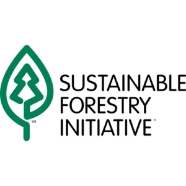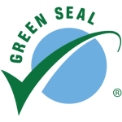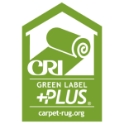Spring is finally here! It is now the season of fresh flowers, warm sunshine, and good-old-fashioned Spring Cleaning!
As we start physically and mentally preparing ourselves to tackle our chores around the home and office (seriously– after a long winter, Spring Cleaning can really feel like a full body-and-mind workout!), it is also a good time to reevaluate the cleaning products you are going to be using to get the job done.
The familiar (or more “traditional”) brands of cleaning products that we see on the supermarket shelves may currently be your usual (or sometimes default) weapons of choice, but in reality most of these products contain synthetic chemicals that are extremely hazardous to your health and the environment.
So what exactly is in these products that’s harmful, and how do we avoid unwanted exposure?
Reading product labels is the number one way to control what you are bringing into your workplace or home. Whether it’s wiping down your desktop at the end of the day or shampooing the footprints out of your living room carpet, it’s important to know the truth about what’s in your cleaning products before you or others use them.
Below is a list of some of the most toxic chemical ingredients that can be found in common household cleaning products. Try to stay away from products that contain:
– Phenol/Carbolic Acid (most commonly found in household disinfectants): Phenol, also known as carbolic acid, is a hazardous air pollutant. It can also severely irritate the eyes and burn skin upon contact. When inhaled, phenol is highly corrosive and attacks the central nervous system, heart, lungs, liver, and kidneys.
– Formaldehyde (most commonly found in mold and mildew cleaners): Formaldehyde is a carcinogenic chemical, air pollutant, and irritant to the skin, eyes, and mucus membranes. Household cleaners that contain formaldehyde contaminate our “ambient air” and cause symptoms such as severe nausea and headaches, nosebleeds, difficulty breathing, and memory loss. Inhaling formaldehyde can also increase your risk for nasopharyngeal and lung cancers.
– Ammonia (most commonly found in glass cleaning products): Ammonia can cause severe irritation to the eyes and skin upon contact and can also cause damage to the respiratory and digestive tracts upon inhalation. Ammonia is especially poisonous to aquatic animals (including fish, marine mammals, and amphibians), and has fatal consequences when it is released into our waters and ecosystem.
– Phosphates (most commonly found in general household cleaning products and laundry detergents): One of the largest culprits behind ocean pollution is phosphates, which are responsible for algae overgrowth and the subsequent depletion of oxygen in our oceans, rivers, and streams. Ultimately, high phosphate levels are fatal and create an unlivable environment for both aquatic wildlife and plant life. When it comes to human exposure to phosphates in cleaning products, symptoms such as nasal and throat irritation as well as skin rashes are not unusual.
Really knowing what’s in your cleaning products can seem a little bit scary, but it is so important to be aware of their serious health effects and their environmental implications as well.
At GBS, our mission is to clean green and care for our customers, our community, and for the environment. That’s why all of the cleaning products we use are completely non-toxic, hypo-allergenic, environmentally-friendly, and 100% certified Green.
Be sure to always read those labels on your own, friends! Keep it clean, and keep it green!
Sources:
www.globalhealingcenter.com/health-hazards-to-know-about/top-10-hazardous-household-chemicals
www.organicconsumers.org/articles/article_279.cfm













